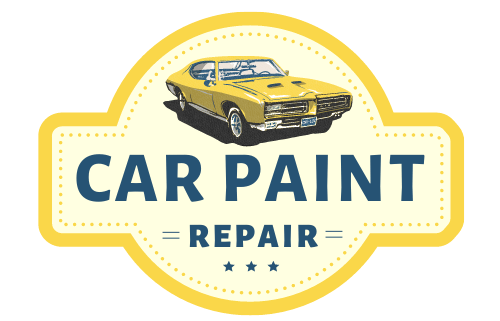
When it comes to car paint repair, even small mistakes can affect the quality of the results, leading to visible imperfections or even damaging the car’s paint in the long run. Here’s a detailed guide on the top 10 car paint repair mistakes and how to avoid them.
1. Not Removing Dirt and Wax Before Paint Touch-Up
Applying paint on a dirty or waxy surface prevents proper adhesion, leading to poor, uneven coverage and increased chances of peeling or chipping later. Start by washing the area with water and mild dish soap to remove surface dirt.
Follow this with a specialized prep solvent, which effectively cuts through oils, road grease, and wax residues. Prep solvents are designed to remove these contaminants and improve paint adhesion, creating a clean surface for long-lasting results.
Failing to do this first step can mean that even high-quality touch-up paint will not bond properly, potentially leading to peeling or cracking shortly after the repair.
This mistake also increases the risk of trapped dirt creating bumps or unevenness in the final paint layer.
2. Painting in the Wrong Temperatures
Temperature and humidity play a crucial role in car painting. If you paint in temperatures below 55°F (13°C) or above 80°F (27°C), you risk a variety of paint issues.
In colder conditions, paint tends to thicken, leading to uneven application, while high temperatures cause it to dry too quickly, increasing the likelihood of discoloration, blotches, or a gritty finish. Ideal conditions are around 72°F with 50% humidity.
For best results, plan to paint in a controlled environment where you can monitor and maintain the temperature.
Avoid extreme weather days to ensure that the paint can dry evenly without developing bubbles, which often occur when the paint dries unevenly across its layers.
3. Using the Wrong Sandpaper
Using the wrong type of sandpaper is one of the most common mistakes. Regular wood sandpaper or a standard sanding block is too abrasive for car surfaces and can leave visible scratches.
Instead, use sandpaper specifically designed for auto repairs, such as wet/dry sandpaper with a grit suitable for paintwork (typically 400-600 grit for smoothing, or finer for finishing).
Using proper sandpaper helps create a smooth, even surface for the paint, reducing the risk of visible scratches. For intricate areas, opt for a sanding sponge that conforms to the shape of the surface, ensuring even contact and reducing the likelihood of accidental scratching.
4. Not Applying Primer
Primer is essential because it creates a bond between the metal and the paint, enhancing paint durability and protecting the car’s surface.
When paint is applied directly to metal without primer, it doesn’t bond as effectively, making it prone to chipping, peeling, and premature wear.
Applying a primer not only improves adhesion but also prevents rust by acting as a barrier between the metal and environmental factors.
Skipping this step means the touch-up paint may not last as long, leading to more frequent repairs and a less durable finish.
5. Using Paint Older than 6 Months
Using old paint can be problematic, as the paint can deteriorate over time. Paint that is over six months old may have separated, thickened, or become difficult to mix smoothly, leading to uneven application, cracking, and poor bonding.
Old paint may also lose its color accuracy, resulting in a mismatch with the rest of the car’s paint.
Always check the expiration date on your touch-up paint and replace it if it’s beyond six months old. Fresh paint ensures a more accurate color match and better consistency, which helps in achieving a seamless finish that blends with the rest of your car.
6. Applying Paint Layers All at Once
Applying all layers of paint at once can result in bubbles, blotching, or a textured finish. This occurs because the top layer dries faster than the layers below, trapping solvents that cause bubbling. To avoid this, allow each layer to dry completely before adding the next.
Drying times vary depending on the product and conditions but typically range from 30 minutes to an hour.
If you’re painting outdoors or in humid conditions, consider waiting longer to ensure each layer is fully cured before applying the next. Patience here will lead to a smoother, more durable finish.
7. Using Nail Polish Instead of a Clear Coat
Although nail polish may seem like a convenient substitute for a clear coat, it lacks the durability and protection of automotive clear coats.
Nail polish is not formulated for outdoor elements, and it wears off quickly, often within a week or two.
A clear coat designed for cars not only protects the paint from UV rays, oxidation, and environmental damage but also adds a glossy finish that nail polish cannot replicate.
Investing in a quality automotive clear coat ensures your paint repair looks professional and lasts much longer.
8. Using a Bath Towel or Paper Towel on the Car Surface
Using bath towels or paper towels to clean the car surface can scratch the paint. Paper towels contain wood fibers that are too coarse for delicate car finishes, and bath towels, though softer, can still leave micro-scratches.
Microfiber cloths, however, are specially designed to be soft and lint-free, making them ideal for car detailing.
Microfiber is highly absorbent and can hold multiple times its weight in water. Additionally, the fine threads reduce the risk of scratches, ensuring that your paintwork remains flawless after each wash or polish.
9. Applying Wax Right After Painting
After painting, it’s important to wait at least 30 days before applying wax. Wax creates a seal over the paint, which can trap solvents that need time to evaporate for the paint to harden fully. If these solvents are sealed in, the paint may develop imperfections or fail to cure properly.
Letting the paint cure fully without wax ensures it becomes durable and resistant to environmental elements.
After 30 days, apply wax to add a protective layer and enhance the paint’s shine and longevity.
10. Allowing Rust to Develop
Scratches or chips should be repaired as soon as possible to prevent rust. When bare metal is exposed to moisture and air, rust begins to form and can spread quickly.
Over time, rust will weaken the car’s metal and, if left unchecked, can create holes in the frame.
Prevent rust by promptly touching up any paint chips or scratches. If rust has already developed, use a high-quality rust remover before beginning your paint repair.
Rust removal and touch-up paint will keep your car looking its best and prevent structural damage.
Avoiding these common car paint repair mistakes will save you time and money while ensuring a professional finish. Proper preparation, careful layering, and using the right products for each step are the keys to long-lasting car paint repairs.
